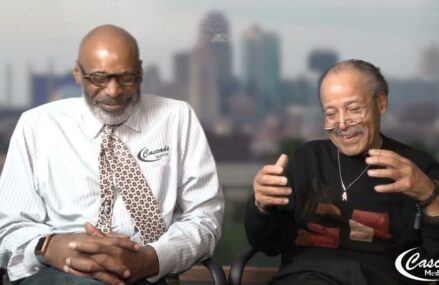By MARCY GORDON
FILE – In this Aug. 8, 2011, photo, the Fannie Mae headquarters is seen in Washington. Fannie Mae earned $17.2 billion lin 2012, the biggest annual profit in the U.S. mortgage giant’s history, helped by a record fourth quarter. The 2012 gain was driven by the housing recovery, which has reduced delinquencies and lifted home prices six years after the bubble burst. (AP Photo/Manuel Balce Ceneta, File)
WASHINGTON (AP) — Home prices are up. Foreclosures are down. Construction is up. And now comes the latest sign of the U.S. home market’s revival: Fannie Mae, the mortgage giant that nearly collapsed five years ago, has earned its biggest yearly profit ever.
Fannie Mae earned $17.2 billion last year and said Tuesday that it expects to stay profitable for “the foreseeable future.” It also paid $11.6 billion in dividends to the U.S. Treasury in 2012.
And last year was Fannie’s first since its takeover by the government in 2008 that it asked for no federal aid. As recently as 2011, Fannie lost nearly $17 billion and requested nearly $26 billion in aid.
Once symbols of the reckless risk-taking that fed the housing bubble, Fannie and its smaller sibling Freddie Mac were seized by the government in 2008 after they were buried by bad mortgages. Taxpayers have spent $188 billion to rescue the two firms — the costliest bailout of the financial crisis.
Fannie still has a long way to go to repay taxpayers. It received $116 billion in aid. So far, it’s repaid $35.6 billion.
Freddie received $72 billion and has paid back nearly $24 billion. Freddie has reported positive earnings for five straight quarters.
Fannie and Freddie don’t actually make loans. But they exert huge influence in the housing market because they help make loans available. They do so by buying mortgages from lenders, packaging them as bonds, guaranteeing them against default and selling them to investors.
Together, Fannie and Freddie together own or guarantee about half of all U.S. mortgages — nearly 31 million home loans worth $5 trillion. And along with other federal agencies, they back about 90 percent of new mortgages.
The two companies nearly folded because of huge losses on risky mortgages they purchased. Fannie and Freddie bore some responsibility for those losses. Like banks, they relaxed their lending standards during the housing boom and failed to thoroughly check incomes and assets. High-interest loans, some with low “teaser” rates, were doled out to risky borrowers.
Now, the two companies are benefiting from the home market’s steady recovery. Nationally, prices have risen nearly 9 percent since bottoming in March 2012. The number of homes repossessed by lenders has reached its lowest point since September 2007, according to RealtyTrac, a foreclosure listing firm.
And the proportion of loans Fannie holds or guarantees that are at least 90 days’ delinquent is down: The figure dropped to 3.3 percent at the end of 2012, compared with 5.5 percent in early 2010.
Fannie earned $7.6 billion in the October-December quarter, a quarterly record for the company. About $1.3 billion of the gain came from a settlement paid by Bank of America Corp. related to mortgages that soured during the housing crash.
Fannie paid the Treasury a quarterly dividend of $2.9 billion. Under federal policy, Fannie and Freddie must turn over their profits to the government. Fannie’s fourth-quarter earnings compared with a net loss of $2.4 billion in the final quarter of 2011.
“Our financial results improved significantly in 2012, and we expect our earnings to remain strong over the next few years,” Timothy Mayopoulos, Fannie’s CEO, said in a statement.
Fannie and Freddie had grown spectacularly during the housing boom as home prices soared and demand for mortgages exploded. The two rushed to compete with big banks for dominance in the mortgage market. In doing so, they bought or guaranteed mortgages they once would have deemed too risky.
The two were championed by powerful lawmakers in Washington. And they compensated their executives with pay that was high even by the standards of Wall Street.
After their takeover by the government, Fannie’s and Freddie’s pay and bonus structure came under fire when it was revealed that 12 executives received a total of $35.4 million in salary and bonuses in 2009 and 2010. Fannie’s chief executive received about $9.3 million for the two years, Freddie’s $7.8 million.
Once mainstays of the New York Stock Exchange, the stocks of both companies traded above $60 in 2007. Since 2010, both have been listed on the Over-the-Counter Bulletin Board, an electronic quotation service. They’re trading below $1.
After it took control, the government owned 80 percent of each company, and a federal regulator has made financial decisions.
The government provided taxpayer aid in exchange for preferred stock. The stock pays 10 percent interest, which Fannie and Freddie have been repaying in dividends each quarter in which they make a profit.
As recently as mid-2011, some experts had suggested that Fannie and Freddie were so deep in debt to the government that it could take decades for them to be able to repay the taxpayers. But the past 12 to 18 months have market a solid advance for the housing market, noted Ken Mayland, president of ClearView Economics, and Fannie and Freddie are benefiting.
“It’s a spirited recovery,” he said. “The housing sector will be by far the strongest (economic) sector growth-wise.”



